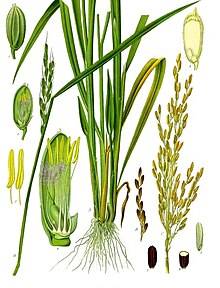Abstract
Poly(lactic acid) (PLA) composites consisting of PLA, rice starch (RS) (0–50 wt%) and epoxidised natural rubber (ENR50) were compounded by a twin-screw extruder and compression moulded into dumbbell specimens. Tensile tests were performed to characterize the mechanical properties of the PLA/RS composites. Morphological studies were done on the tensile fractured surface of the specimens by using scanning electron microscopy (SEM). Twenty weight percent of RS achieved a good balance of strength and stiffness. Beyond 20 wt% loading of RS, the tensile strength and elongation at break of PLA decreased drastically. This may be attributed to the agglomeration of RS, which could then act as stress concentrator. The incorporation of ENR50 increased the tensile strength and elongation at break of the PLA/RS composites remarkably, owing to the elastomeric behaviour and compatibilisation effects of ENR50. Interestingly, the morphology of PLA/RS composites transformed to a more ductile one with the addition of ENR. The kinetics of water absorption of the PLA/RS composites conforms to Fick's law. The Mm and D values are dependent on the RS and ENR concentrations. The tensile properties of the PLA/RS composites deteriorated after water absorption. The retention-ability and recoverability of the PLA/RS composites are relatively low, attributed to the hydrolysis of PLA, degradation of the PLA–RS interface and leaching of the RS particles. In addition, the tensile properties of PLA/RS composites decreased drastically upon exposure to enzymatic degradation. Extensive pinhole and surface erosion on the PLA/RS composites indicate high degree of hydrolysis. Whilst the addition of ENR leads to some improvements in tensile properties, nevertheless, it enhanced the biodegradability of the PLA/RS composites when exposed to water and α-amylase enzymatic treatments.
Yew, G. H., Yusof, A. M., Ishak, Z. M., & Ishiaku, U. S. (2005). Water absorption and enzymatic degradation of poly (lactic acid)/rice starch composites. Polymer Degradation and Stability, 90(3), 488-500.
Poly(lactic acid) (PLA) composites consisting of PLA, rice starch (RS) (0–50 wt%) and epoxidised natural rubber (ENR50) were compounded by a twin-screw extruder and compression moulded into dumbbell specimens. Tensile tests were performed to characterize the mechanical properties of the PLA/RS composites. Morphological studies were done on the tensile fractured surface of the specimens by using scanning electron microscopy (SEM). Twenty weight percent of RS achieved a good balance of strength and stiffness. Beyond 20 wt% loading of RS, the tensile strength and elongation at break of PLA decreased drastically. This may be attributed to the agglomeration of RS, which could then act as stress concentrator. The incorporation of ENR50 increased the tensile strength and elongation at break of the PLA/RS composites remarkably, owing to the elastomeric behaviour and compatibilisation effects of ENR50. Interestingly, the morphology of PLA/RS composites transformed to a more ductile one with the addition of ENR. The kinetics of water absorption of the PLA/RS composites conforms to Fick's law. The Mm and D values are dependent on the RS and ENR concentrations. The tensile properties of the PLA/RS composites deteriorated after water absorption. The retention-ability and recoverability of the PLA/RS composites are relatively low, attributed to the hydrolysis of PLA, degradation of the PLA–RS interface and leaching of the RS particles. In addition, the tensile properties of PLA/RS composites decreased drastically upon exposure to enzymatic degradation. Extensive pinhole and surface erosion on the PLA/RS composites indicate high degree of hydrolysis. Whilst the addition of ENR leads to some improvements in tensile properties, nevertheless, it enhanced the biodegradability of the PLA/RS composites when exposed to water and α-amylase enzymatic treatments.
Yew, G. H., Yusof, A. M., Ishak, Z. M., & Ishiaku, U. S. (2005). Water absorption and enzymatic degradation of poly (lactic acid)/rice starch composites. Polymer Degradation and Stability, 90(3), 488-500.














